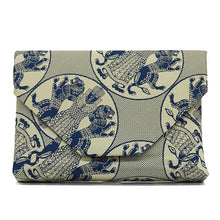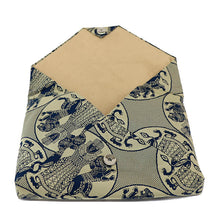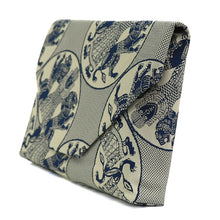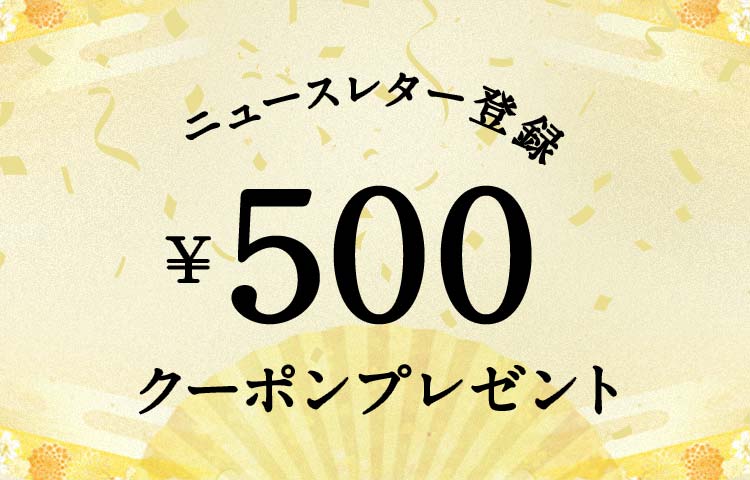Detail
| Product : | Sukiya Bukuro (A Pouch) (Tea-things) (Shishi-tori Oji) |
|---|---|
| Type : | 数寄屋袋 |
| Size (cm) : | W21.0 x H15.0 x D3.0 |
| Tags : | 130th anniversary object-3、 ペルシャ、 Wrapping available、 Pattern_Shishitori-Oji、 Search_Spring Weekend 2025 Target、 Search_Spring_Weekend_2025_Subject_2、 Autumn Tea Ceremony、 Tea utensils、 |
| Other : | The pattern may be different from the image shown due to the cutting process. Please understand this in advance. |
| Other : | Gift wrapping service available |
Reviews
Description
A clutch bag for tea ceremonies.
Patterns
Shishi-tori Ōji(Brocade with Design of Hunting-lion Prince)

This vigorous design of a hero holding a lion in each arm is said to have depicted the legendary Mesopotamian king Gilgamesh who was written in the "Epic of Gilgamesh" recorded in the twelve cuneiform-inscribed clay tablets out of the tens of thousand pieces unearthed from the excavation site of the old Assyrian library.
The symmetric pattern drawn in the roundel like this fabric was the typical design of the textiles woven in the Sassanid dynasty, Persia, whereas the design of holding a lion in an arm had been seen in the rel ieves of the palace in the Assyrian era. This design is modeled after an ancient fabric woven in the Middle East approximately in the 10th century AD probably for exporting to the west that we produced into warp-patterned brocade keeping the vigorous atmosphere.



















